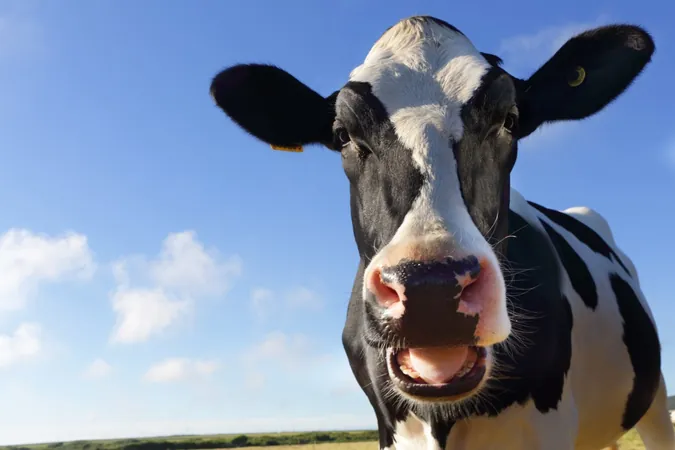
Alarming Rise: H5N1 Bird Flu May Be Infecting More People Than We Previously Believed!
2024-11-08
Author: Wei
Recent Findings on H5N1 Bird Flu Infections
Recent findings indicate that the H5N1 bird flu virus is likely infecting more individuals than previously thought. A study conducted by the Centers for Disease Control and Prevention (CDC) revealed that approximately 7% of dairy farmers in Michigan and Colorado have tested positive for antibodies associated with H5N1. This is a significant finding, considering that the highly pathogenic avian influenza has been circulating increasingly among mammals, particularly dairy cattle, and other livestock since 2022.
Current Human Cases and Transmission
The spread of H5N1 has raised eyebrows, with 46 confirmed human cases reported in the U.S. this year alone. Most of these cases appear to have originated from contact with infected poultry or cattle. Although the CDC's latest report, released in its Morbidity and Mortality Weekly Report, does not indicate that H5N1 is transmitting from human to human, it serves as a stark reminder that heightened vigilance is crucial to avert potential outbreaks that could escalate into a public health crisis.
Monitoring Efforts and Findings
The CDC collaborated with health officials in the two states known for dairy cow outbreaks to monitor local farm workers. Out of 115 individuals tested, eight were found to have H5N1 antibodies, suggesting they had previously contracted the virus. Notably, only four of these workers reported recent illness, highlighting a concerning gap in awareness and reporting of mild cases.
Geographical Spread and Underreporting Concerns
These findings are particularly troubling given that H5N1 outbreaks in dairy cattle have occurred across 48 states this year, exposing potentially thousands of farm workers to the virus. This suggests that the reported human cases might represent a significantly underestimated number of infections, emphasizing the need for more thorough monitoring.
Potential for Mutation and Future Risks
Interestingly, while the current data doesn’t suggest that H5N1 has adapted to infect humans easily, the ongoing transmission from birds to mammals raises concerns about the potential for the virus to evolve. If H5N1 were to mutate into a strain capable of rapid human-to-human transmission, the repercussions could be severe, leading to a deadly pandemic.
Call to Action: Enhanced Monitoring and Education
Experts recommend that there is an urgent need to enhance monitoring efforts on dairy farms. The CDC advocates for tracking and testing exposed workers, including those exhibiting even mild symptoms. Educational initiatives should also be instituted to inform farm workers about the risks of infection and effective preventative measures.
Conclusion: Preparedness and Proactive Measures
As we grapple with this evolving situation, the question remains: How prepared are we to deal with a potential H5N1 outbreak in humans? The clock is ticking, and the importance of proactive health measures has never been clearer. Will we act fast enough to prevent a public health disaster? Stay tuned as this story unfolds.



 Brasil (PT)
Brasil (PT)
 Canada (EN)
Canada (EN)
 Chile (ES)
Chile (ES)
 España (ES)
España (ES)
 France (FR)
France (FR)
 Hong Kong (EN)
Hong Kong (EN)
 Italia (IT)
Italia (IT)
 日本 (JA)
日本 (JA)
 Magyarország (HU)
Magyarország (HU)
 Norge (NO)
Norge (NO)
 Polska (PL)
Polska (PL)
 Schweiz (DE)
Schweiz (DE)
 Singapore (EN)
Singapore (EN)
 Sverige (SV)
Sverige (SV)
 Suomi (FI)
Suomi (FI)
 Türkiye (TR)
Türkiye (TR)